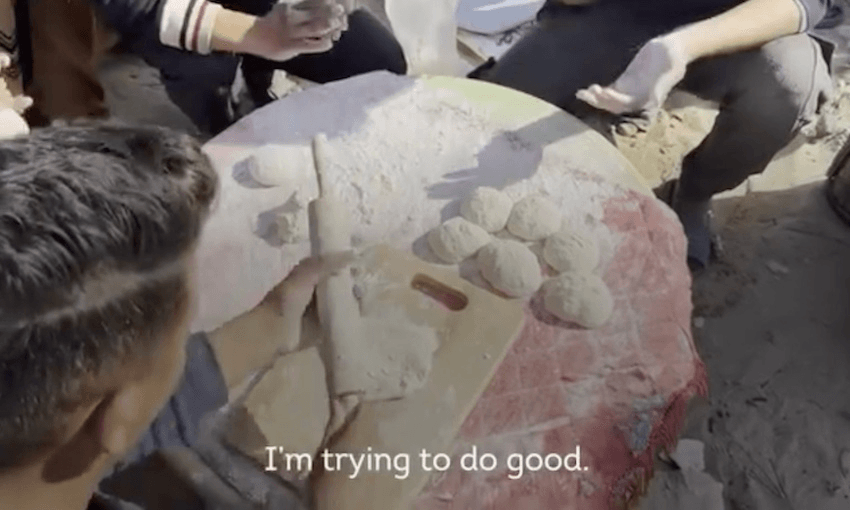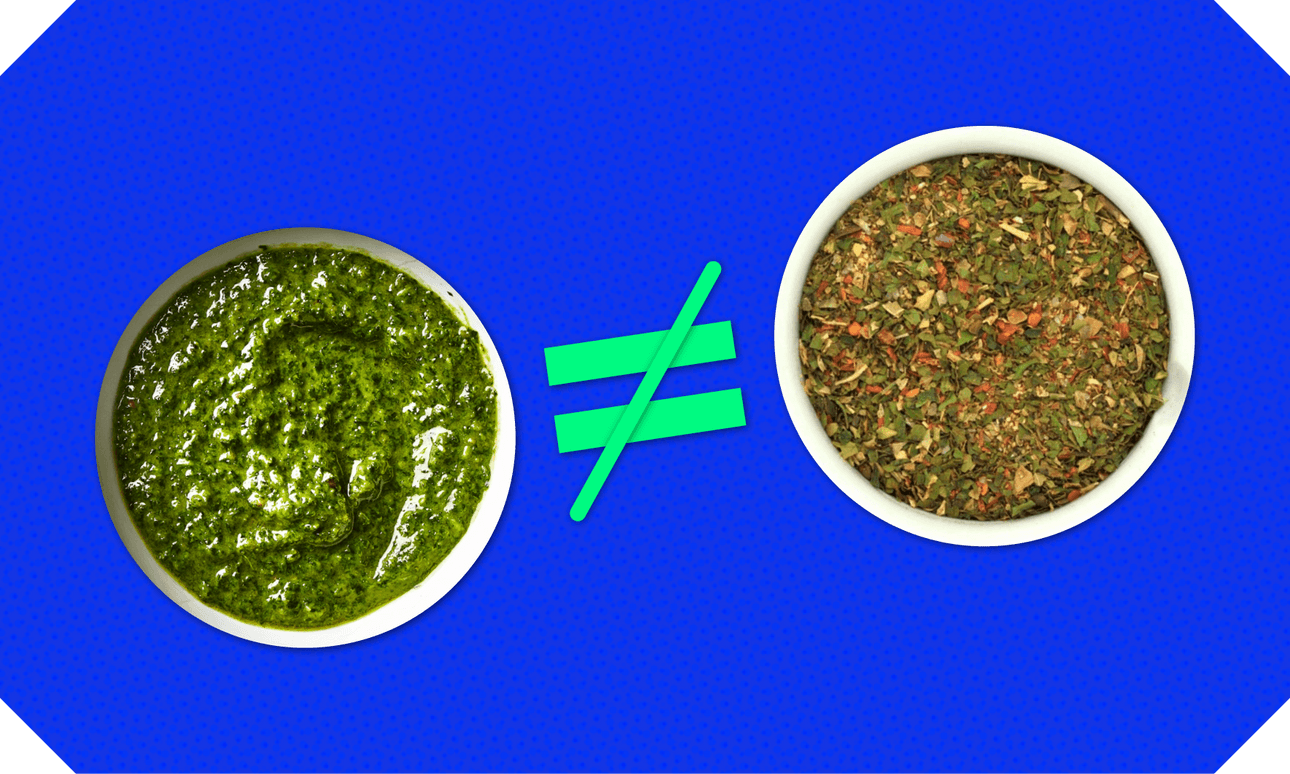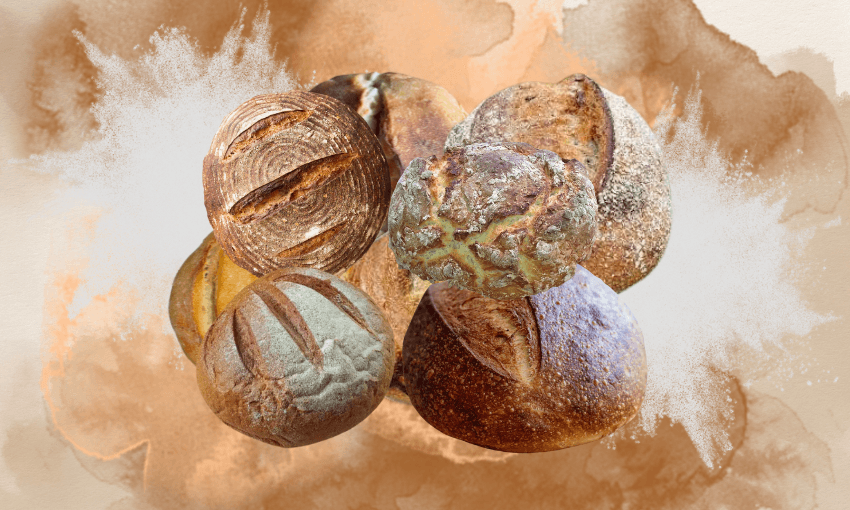Some reflections on damper, saj, and thinking of others.
This is an excerpt from our weekly food newsletter, The Boil Up.
Much of my childhood was spent in Australia and so many of my cherished food memories are located there. Much like Aotearoa, defining Australian “cuisine” is a complex task, but there was one quintessentially Australian food that I loved: damper. Bread so simple a child could – and did – make it, just flour, salt and water pinched together until a dough formed. Usually made on Scout camps, we would then wrap this dough around sticks and toast it over the flames like marshmallows. When the outside was crispy and golden, it was time to unravel the bread and douse it in golden syrup, the soot and sugar turning fingers dark, sticky and delicious.
Damper is bread at its most basic, just flour, water and heat. All around the world, people combine these three things to create something simple, miraculous, sustaining. Not just damper but tortilla, matzo, roti, bataw, bannock, crepe, arboud, arepa, tortilla de rescoldo, lavash, the Eucharist, elemental, life-affirming moons of cooked dough. As artist and baker Lexie Smith (aka Bread on Earth) pointed out recently in The New York Times, this simplicity is why bread is so venerated, because in times of devastation and war, bread can “…keep people alive until the world order settles back into something more humane.”
In besieged Gaza, starving Palestinians have revived traditional cooking methods to bake saj – an unleavened flatbread cooked on hot metal dome of the same name – eating the thin bread without syrup, butter, jam, mostly without meat, eggs, onions, vegetables of any kind. Even before October 7, 65 percent of Gaza’s population was food insecure, and as has happened in times of war since time immemorial, bakeries were early targets. With little else but flour available, UN officials reported that around one month into the siege most Palestinians were surviving on two pieces of saj a day.
Six months on and systematic blockades have seen people grinding animal feed into flour to make bread they can barely chew, sorting through dirty rice to salvage clean grains, scouring the ruins of their bombed homes to find flour half spoiled by rainwater. Last week, over a hundred starving Palestinians were killed and at least 750 injured while waiting for aid trucks in a horrific attack that has been dubbed the Flour Massacre. Bread can keep people alive, but they are being killed in pursuit of it.
In her essay Bread & Salt, Palestinian-American artist and cook Amanny Ahmad traces bread back to where it all began, to Palestine. She writes, “It has been 14,000 years since the oldest bread (that we know of) was fire baked on hot stones by my Natufian ancestors, a remnant of which was found only recently in an ancient hearth in the area now called the Levant.” Wheat has been harvested, ground and baked in Palestine for several thousand years, long before the Abrahamic religions emerged. Ahmad continues, explaining how the remains of that ancient hearth can be seen as “a precursor to the tabun oven, which itself evolved into the communal oven and gathering space of Palestinian village society.”
View this post on Instagram
In war-torn Palestine today, where there is bread baking, people still gather. In a video posted from Gaza City last week, Palestinian journalist Bisan Owda spoke to families fleeing starvation, but not everyone she met was evacuating. Lining the street were people staying in Gaza City, families making bread to feed those arriving hungry and malnourished from the north. With hands covered in flour, a huge mixing bowl in front of him, a man tells Owda: “We give them bread. We make sandwiches: mortadella, hummus and whatever… I’m just trying to do good.” A woman with an uncooked disc of dough draped over her arm explains how “little children come running from the bridge for the bread… they race to the bread. It’s like a dream for them”, echoing the words of a young father evacuating with his three sons who described a loaf of bread as “a child’s dream.”
Bread is a dream, but it should be one that is easily fulfilled. While writing this newsletter, I sat in a bakery café and watched people arrive empty-handed and leave with brown bags and hot coffees. A mother and teenage daughter ordered hot cross buns with butter. Two pregnant women were served plum Danish pastries which they cut in half, trying to preempt the inevitable mess when flaky Viennoiserie meets teeth. On my phone, I re-read Mosab Abu Toha’s essay, My Family’s Daily Struggle to Find Food in Gaza, which ends with a description of a friend from Gaza arriving to his home and eating the grains of rice dropped on the floor during dinner. Finishing my own pastry, I dabbed my finger against my plate, refusing to waste a single buttery flake.







